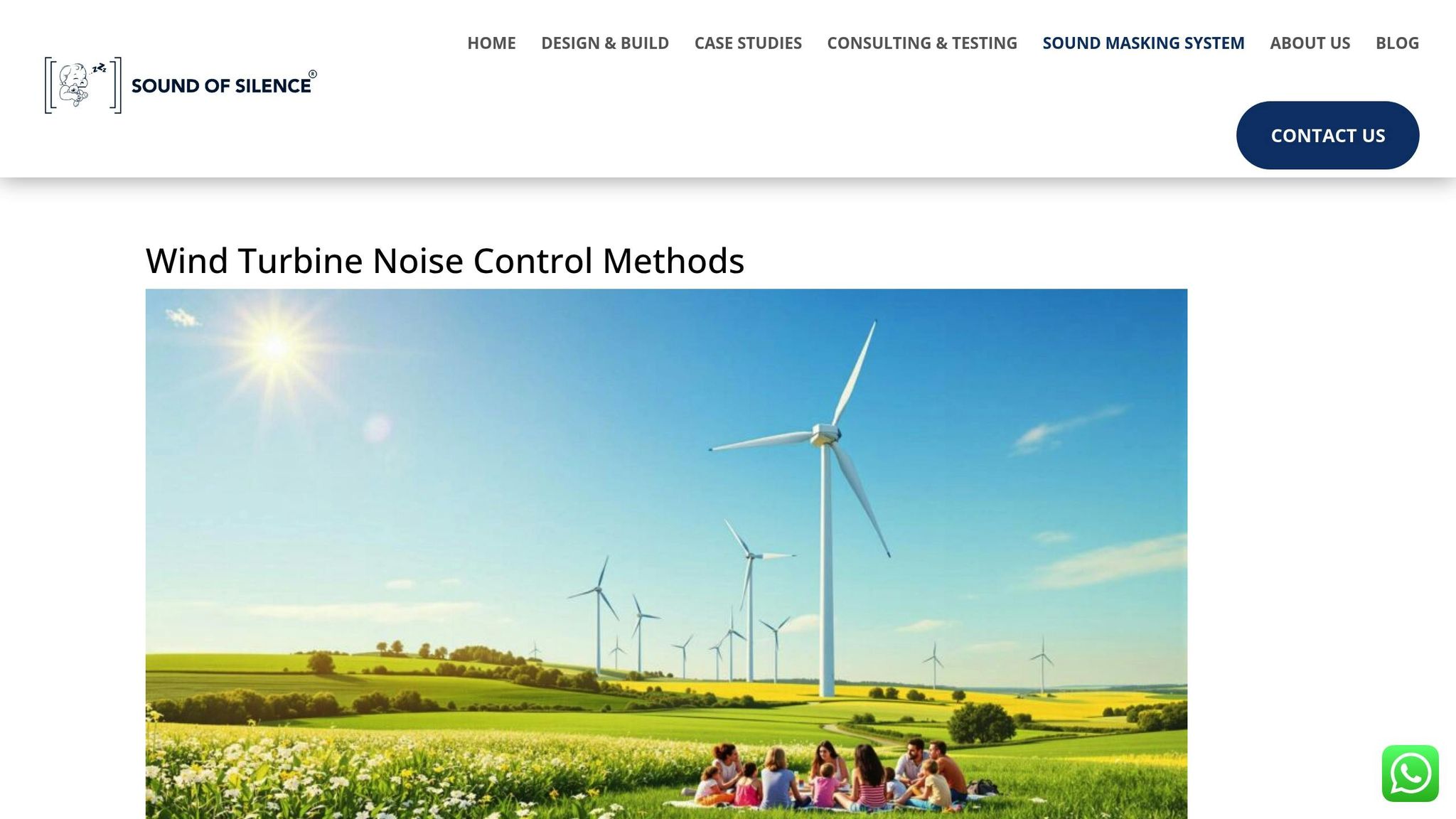Wind turbine noise can disrupt sleep, cause stress, and even lead to cardiovascular issues for people living nearby. Noise levels above 35 dB(A), especially at night, are linked to sleep problems and psychological distress. Those within 1.5 km of turbines are most impacted.
Here’s what you should know:
- Types of Noise: Includes low-frequency sounds, infrasound, and amplitude modulation (swooshing or thumping).
- Health Risks: Sleep disruption, anxiety, raised blood pressure, and higher cortisol levels.
- UK Noise Limits: Daytime limit of 35-40 dB(A) and night-time limit of 43 dB(A).
- Solutions: Serrated blade edges, improved turbine designs, strategic placement, and regular maintenance help reduce noise.
Accurate noise assessments and compliance with UK regulations are key to protecting communities.
Wind turbine noise and human health
Health Effects of Wind Turbine Noise
This section looks at the health issues linked to long-term exposure to wind turbine noise. Research has repeatedly connected this type of noise to problems like disturbed sleep, stress-related reactions, and even cardiovascular concerns [1].
Main Health Impacts
- Sleep Disruption: Low-frequency sounds and fluctuating noise levels are often linked to disturbed sleep and irritation (see ‘Understanding Wind Turbine Noise’). Studies show people living within 2 km of turbines experience longer times to fall asleep and poorer sleep quality [2].
- Psychological Distress: Ongoing exposure can lead to anxiety, irritability, and trouble focusing, especially in those more sensitive to noise [3]. Night-time noise above 40 dB(A) tends to worsen these effects [4].
- Physical Health Effects: There’s evidence of raised blood pressure, higher cortisol levels, and potential strain on the heart and blood vessels with extended exposure [5].
Research Findings and Knowledge Gaps
What We Know:
- Regular exposure to noise levels above 35 dB(A) is strongly linked to higher rates of sleep disorders [6].
- Health effects are more pronounced for those living within 1.5 km of turbines [7].
What We Don’t Fully Understand:
- The long-term effects of infrasound on the body remain unclear, particularly when it comes to ongoing cardiovascular health issues [8]. This highlights the need for accurate infrasound monitoring.
The next section will explore tools for objectively measuring and assessing these risks.
Noise Assessment Methods
Addressing the measurement gaps mentioned earlier requires thorough noise assessment. This involves combining on-site measurements with predictive modelling to determine sound levels, ensure compliance with regulations, and inform mitigation strategies.
sbb-itb-06ab728
Control Measures and Rules
With the health effects of wind turbine noise outlined, let’s look at practical ways to manage it and the legal limits in place.
Noise Reduction Methods
To tackle both aerodynamic and mechanical noise, operators can use a range of effective measures, including:
- Serrated blade edges to reduce the "swooshing" sound from blades.
- Improved gearbox designs with better soundproofing.
- Variable speed operations to lower tonal noise levels.
- Strategic turbine placement that takes advantage of natural terrain.
- Regular maintenance to stop mechanical noise from worsening over time.
UK Noise Standards
The UK enforces clear rules to limit wind turbine noise:
- Day-time limits: 35-40 dB(A) at nearby homes.
- Night-time limits: A maximum of 43 dB(A) over any 10-minute period.
- Amplitude modulation penalty: An extra 5 dB(A) if present.
- Setback distance: A minimum of 500 metres between turbines and homes.
- Pre-installation assessments: Noise impact evaluations are mandatory before turbines are installed [9].
Sound of Silence works with wind farm operators to help them meet these standards. Through detailed acoustic testing and customised noise control strategies, they ensure compliance while safeguarding the wellbeing of local communities.
Sound of Silence Services

In the UK, noise regulations for wind farms are clearly defined, but putting them into practice can be challenging. Sound of Silence steps in to provide expert assessment and control services, turning policies into practical, real-world solutions.
Testing and Analysis: Ensuring Compliance and Guiding Solutions
Sound of Silence offers precise acoustic testing to measure turbine and ambient noise. This includes sound level surveys under various operating and environmental conditions, along with detailed compliance reports tailored to each site.
Bespoke Noise Control Solutions
Sound of Silence creates customised plans to address noise concerns effectively:
- Acoustic modelling and consultancy to refine turbine placement and layout
- Recommendations for noise reduction measures at sensitive locations
- Technical support during the installation of noise control systems
- Verification testing and ongoing monitoring to ensure continued effectiveness
Summary
Wind turbine noise can affect health, but these risks can be addressed with proper evaluation and control strategies. As wind farms continue to grow in rural and suburban areas of the UK, studies have shown that noise from turbines – especially above 35 dB(A) – can lead to issues like disrupted sleep, stress, and cardiovascular problems. To manage this, sound assessments combine on-site measurements with predictive models to meet UK standards, which set maximum noise levels at 40 dB(A) during the day and 43 dB(A) at night.
Practical solutions include using serrated blade edges, enhancing gearbox designs, and placing turbines strategically. Regular maintenance also plays a key role in reducing noise. Companies like Sound of Silence offer tailored acoustic testing and noise control services to help wind farm operators comply with regulations while safeguarding local communities. Their detailed surveys and customised solutions ensure both compliance and community health are prioritised.

